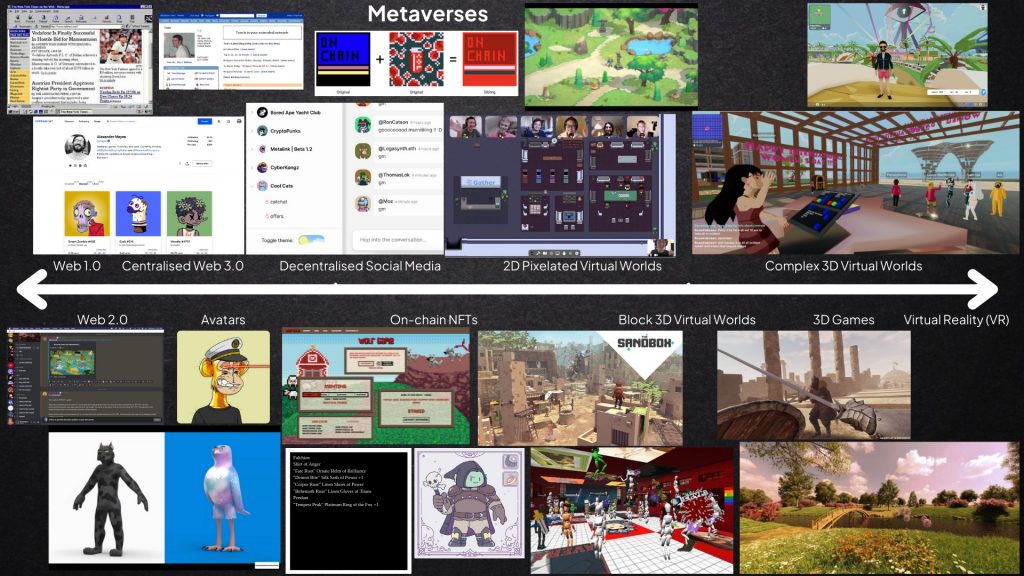With Facebook pivoting their brand Meta and NFTs hitting mainstream consciousness, the question “What is the metaverse?” has been lingering throughout 2021. The Research Team’s tracking of crypto in 2021 has seen incumbents and new entrants define the metaverse differently and therefore they are building different products and services in search of their metaverse’s creation.
The metaverse is inherently some sort of digital experience. The earliest computer scientists were building and interacting with the metaverse of their time, laying the foundation for later generations to build the metaverse of today.
When the metaverse is mentioned most people think of virtual reality (VR) and of virtual worlds, and while those are certainly an aspect of humans ability to have digital experiences, the limitations of blockchain technology and what assets can be ‘on-chain’ versus ‘off-chain’, often underlies a project’s strategy for creating its metaverse.

The types of metaverses were categorised into a range from early web metaverses to fully immersive experiences. The organisation listed for each correspond with the photos used in the infographic.
- Web 1.0 (New York Times on Netscape)
- Web 2.0 (Discord)
- Centralised Web 3.0 (Coinbase NFT)
- The incorporation of NFTs, DAOs and Web3 social tools into centralised crypto services.
- Avatars (Bored Ape Yacht Club)
- The creation of an ecosystem and business around the 2D and 3D NFTs in both the metaverse and real life.
- Decentralised Social Media (Metalink)
- New projects enhancing the Web 2.0 “read/write” ability to become the Web 3.0 “read/write/own” ability for online identities.
- On-chain NFT games (Blitmap, Wolf Game, The Loot Project & Loot Explorers)
- The power of fully on-chain metadata is realised and art is uniquely programmable through smart contract functions that can be called by any contract or application.
- 2D pixelated virtual worlds (Treeverse, Gather Town)
- A hybrid solution between on-chain and off-chain combining a Zelda and Pokemon Gameboy-like player experience with gamified decentralised finance (DeFi) mechanics creating games that can be bought, sold and owned by players.
- Block 3D virtual worlds (The Sandbox, CryptoVoxels)
- The cult popularity of Minecraft and blocky virtual worlds are crossing over with NFTs enabling those virtual worlds to be owned and explored by ownable characters.
- Complex 3D virtual worlds (Decentraland)
- Decentralised 3D worlds combine avatars, games, DeFi, NFTs, events and social interactions into the stereotypical prototype for what a metaverse should look like.
- 3D games
- VR